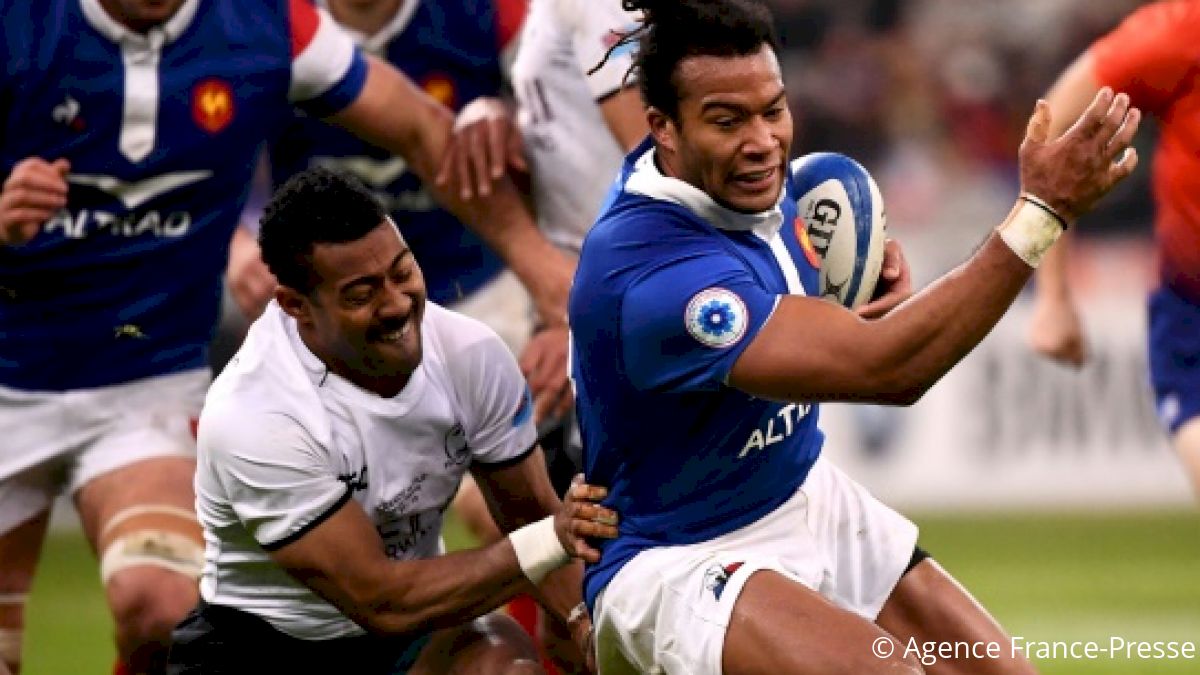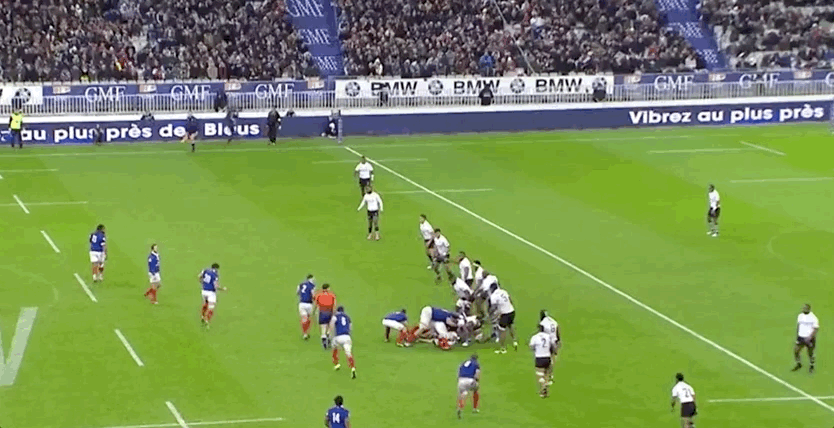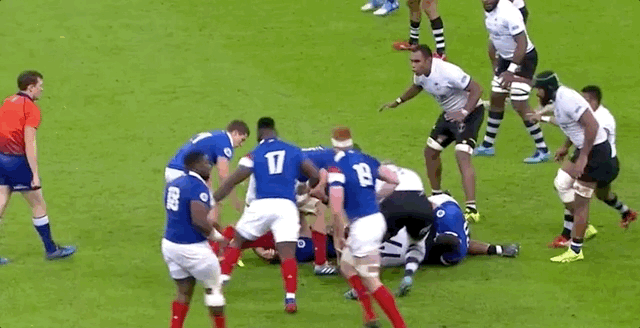How Fiji's Defensive Tactics Cut Down France
How Fiji's Defensive Tactics Cut Down France
Fiji's double-blitz and fill-in was just part of the recipe for a nice French dinner.

Unlock this article, live events, and more with a subscription!
Already a subscriber? Log In
Fiji upset France over the weekend and the Fijians have the French to thank for it.
With the French Top 14 league full of Fijian talent, it is French Rugby that Fiji understands more than anything, and the application of that knowledge helped drive Fiji's victory.
First of all, put aside your assumptions about this matchup. This wasn't, and wasn't going to be, a free-flowing, wild-passing affair. Fiji does play that style in sevens, but as often as not in 15s, Fiji has no trouble bashing it out in the trenches.
Similarly, the French are not the France of old, when we spoke of "French Flair." (This writer remembers watching French TV some years ago and the rugby analysts kept scoffing at the term French Flair—it harkens to a style of play France abandoned 20 years ago.)
French club rugby is a grind, and you win the grind by being more physical than your opponents. The games are still exciting and there's plenty of running rugby, but there's not a lot of space in which to show your French Flair.
Fiji knew this, and went in with an interesting defensive approach. We've seen teams send a blitzer and fill in behind. It's fairly common practice if you've got the personnel. But what about two? That's what Fiji did, creating a two-up, two-down defensive line, and sending those front two in really hard. Like this.

The key with this approach is your other defenders have to be agile enough to fill in immediately. Watch No. 19 and No. 5 for Fiji do this. Remember how we used to be amazed at Fijian locks who could run like backs? Now you're bouncing into the defensive line like flankers.
The second aspect of this approach is that Fiji hit enormously hard. It wasn't just a tackle, but a collision. That, along with filling into the line behind, meant that even if a player escaped the blitzer, he probably a.) took a smack, and b.) would get hit again.
So French center Mathieu Bastareaud, who doesn't shy away from contact, doesn't get brought down immediately, but he does get hammered several times, and never has room to open up.

It's a ton of hard work for Fiji, but it was also tactically sound. Fiji concentrated on sending a pair to make the initial hit, filling in quickly behind with players who have good lateral movement, and those players ready to smash someone again.
And, sometimes, it can all come together.
This sequence ends with one French player out of the play thanks to a big collision. Fiji, then, sends two more defenders up—one (prop Eroni Mawi) makes the tackle, the other (hooker Sam Matavesi) steals the ball.
No wonder the French were held scoreless in the second period.

The answer to this approach? Make your offloads. A little bit more flair and a little less one-pass-and-bash can tear this approach to pieces. But you better execute quickly. Indecision, slow ball, and hesitation will result in not one, but two Fijians right up in your grill.